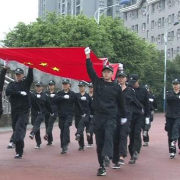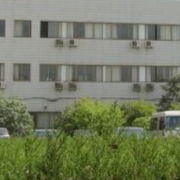wound?wound的过去式和过去分词
来源:择校网 时间:2025-02-12 05:32:34
一、英语单词wound用法,详细点
wound:
[
wu:nd
]
n.
创伤,伤害,苦痛v.
伤害,损害,上发条vbl.
缠绕,蜿蜒,上发条
词形变化:
副词:woundedly
动词过去式:wounded
过去分词:wounded
现在分词:wounding
第三人称单数:wounds
例句与用法:
1.The
wound
is
healing
fast.
伤口愈合得很快。2.The
soldier
received
a
serious
wound
on
the
chest.
这名士兵胸部受了重伤。3.The
bullet
wounded
his
shoulder.
子弹打伤了他的肩膀。4.The
hospital
was
full
of
the
sick
and
wounded.
医院里挤满了伤病员.5.Many
of
the
wounded
died
on
their
way
to
hospital.
许多伤员死在去医院的途中了.6.The
wound
was
healing
slowly.
伤口慢慢愈合了.7.He
was/felt
deeply
wounded
by
their
disloyalty.
因为他们不忠,
他十分伤心.8.The
guard
was
wounded
in
the
leg.
护卫员腿部受了伤.
英英解释:
名词wound:1.
any
break
in
the

skin
or
an
organ
caused
by
violence
or
surgical
incision同义词:lesion2.
a
casualty
to
military
personnel
resulting
from
combat同义词:injury,
combat
injury3.
a
figurative
injury
(to
your
feelings
or
pride)--Robert
Frost4.
the
act
of
inflicting
a
wound同义词:wounding动词wound:1.
cause
injuries
or
bodily
harm
to同义词:injure2.
hurt
the
feelings
of同义词:hurt,
injure,
bruise,
offend,
spite动词wind:1.
to
move
or
cause
to
move
in
a
sinuous,
spiral,
or
circular
course同义词:weave,
wind,
thread,
meander,
wander2.
extend
in
curves
and
turns同义词:wind,
twist,
curve3.
wrap
or
coil
around同义词:wind,
wrap,
roll,
twine4.
catch
the
scent
of;
get
wind
of同义词:scent,
nose,
wind5.
coil
the
spring
of
(some
mechanical
device)
by
turning
a
stem同义词:wind,
wind
up6.
form
into
a
wreath同义词:wreathe,
wind7.
raise
or
haul
up
with
or
as
if
with
mechanical
help同义词:hoist,
lift,
wind形容词wound:1.
put
in
a
coil
二、wound,injure,hurt三者有什么区别
1、wound指枪伤,刀伤,刺伤等皮肉之伤,是出血的,严重的伤,特指战场上受伤,它可以指肉体上的伤害,也可指人们精神上的创伤。
2、injure比hurt正式,hurt多指伤痛,而injure则指损害健康,成就,容貌等,强调功能的损失。
3、hurt普通用语,既可指肉体上的伤害,也可精神上,感情上的伤害。
注意:指肉体上的伤害时,hurt可与badly,slightly,seriously等连用;但如果指精神上的创伤,只能说very much/rather/deeply hurt。
三、wound的过去式和过去分词
wound的过去式是wounded,过去分词是wounded。
动词"wound"是一个不规则动词,它的过去式和过去分词形式都是"wounded"。不规则动词在变化时不遵循通常的规则,需要特别记忆。虽然大多数动词在过去式和过去分词时都会加上"-ed"或者"-d"结尾,但有一些动词有自己独特的形式。
在过去时,动词"wound"表示过去发生的动作或状态,如"I wound the clock yesterday."(我昨天给钟上发条)。在过去分词形式中,动词"wound"通常与助动词"have"连用,构成完成时态或完成进行时态,如"I have wounded my finger"(我弄伤了手指)。
了解和掌握动词的过去式和过去分词形式对于正确使用英语时态和语态非常重要。因此,熟记"wound"的过去式和过去分词形式为"wounded"是提高英语写作和口语表达准确性的一部分。
过去式和过去分词的用法:
一、过去式的用法。
1、可表示过去的动作或状态,例如:I played soccer yesterday.昨天我踢足球了。
2、与时间状语连用,表示过去发生的动作或事件:例如:She studied hard last night.(她昨晚努力学习了。)
3、也用于条件句中的虚拟语气,如:If I had money, I would buy a new car.(如果我有钱,我会买一辆新车。)
二、过去分词的用法。
1、用作完成时态或被动语态的动词形式,例如,I have finished my homework.(我已经完成了作业。)The book was written by him.(这本书是他写的。)
2、用作形容词修饰名词,例如,I was fascinated by the painted scenery.(我被那幅精美的景色迷住了。)
三、注意过去式和过去分词的形式有时是相同的,但在句子中的用法不同。
例如,动词""work""的过去式和过去分词形式都是""worked"",但在句子中的用法不同过去式:She worked late last night.(昨晚她工作到很晚。)过去分词:He has worked here for five years.(他在这里工作了五年了。)
四、wound两种读音有什么不同
wound两种读音是不同的词不同的意思。第一种作名词,读/wu:nd/它的意思是:伤口,也有动词词性,表示伤害,过去式过去分词是wounded
第二种读/waʊnd/是动词wind的过去式及过去分词,表示曲折蜿蜒。
第一个发音一查词典就有,第二个发音新概念第二册第27课词汇表里有音标和解释。
如果你还想了解更多这方面的信息,记得收藏关注本站。







